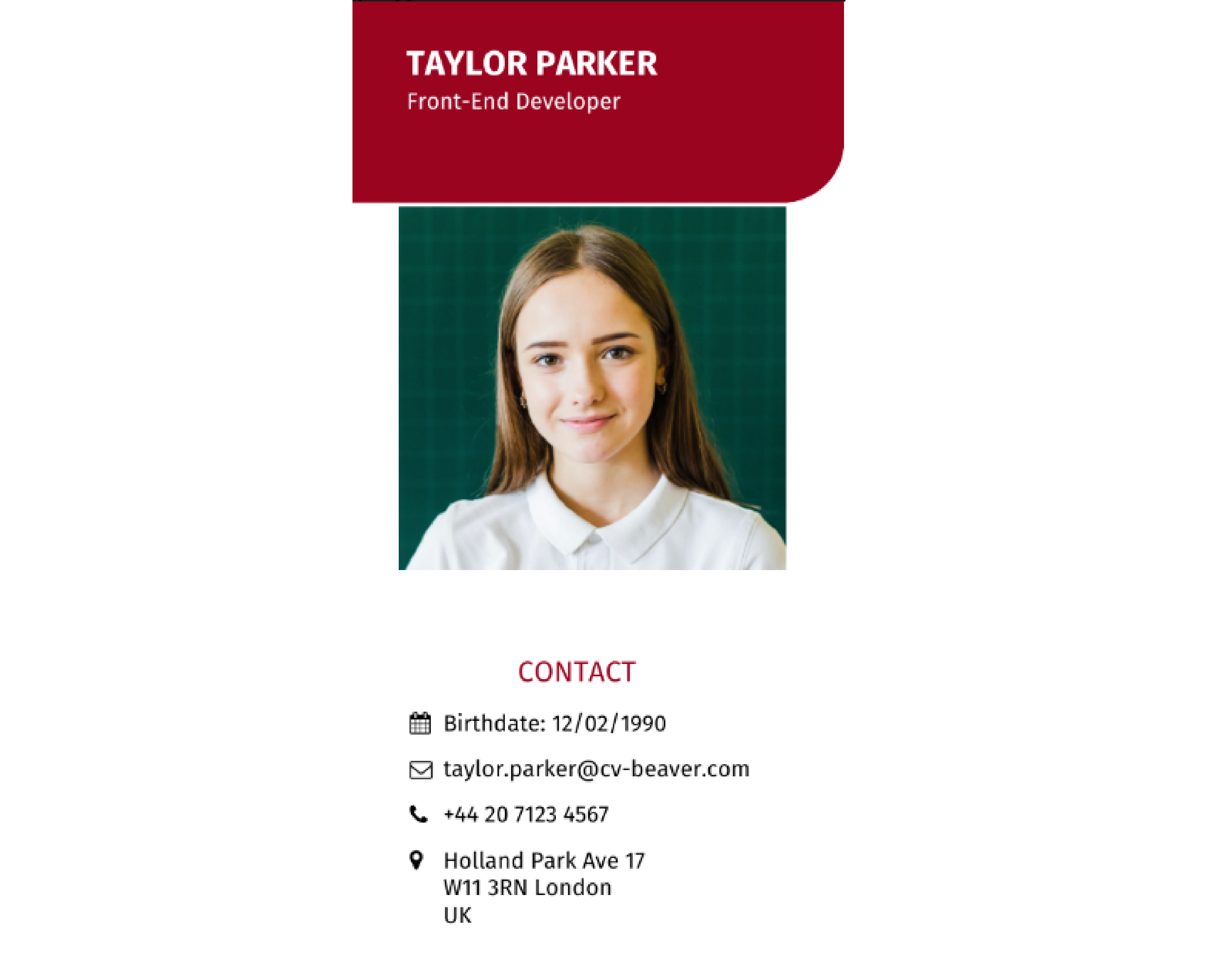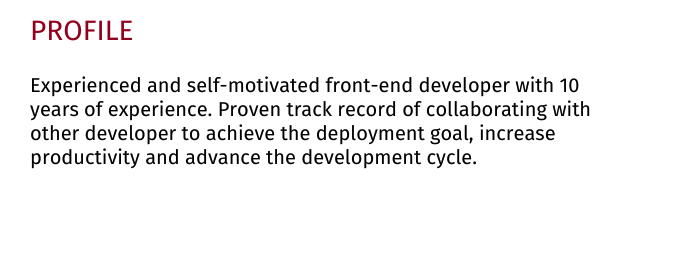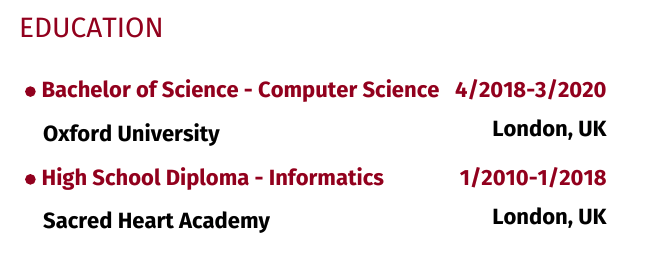
Writing a Standout CV: Your Path to Success
7 Min
Your resume is the most important document for any employer. It's the key to getting a job, so it's crucial to write it right. Online, you'll find many templates with different fields, but it can be hard to know if they're really what you need. In this article, the CV Beaver team will give you important tips for making a great resume.
We believe in Miller's Law, so we present to you 7 tips on how to create an outstanding resume.Stay tuned!
Analyze the Job Listing
When creating your resume, it's crucial to pay close attention to the specific job listing. Take the time to carefully consider how to present yourself to the prospective employer and add more specificity to your entries. For example, if you're applying for a software engineer position, there's no need to mention your proficiency in the Spanish language or your culinary qualifications. Such experiences are irrelevant to the employer and may result in your application not being properly considered.
Analyze job listings, identify the skills that employers find appealing, and provide a specific set of your skills that closely align with those mentioned in the job listing.
Why is this important? Employers often use systems that scan resumes for keywords and rank them accordingly. To understand which keywords should be in your resume, analyze job listings. That's where you'll find all the essential keywords you need.
Structure Your Resume Effectively
In general, a resume typically consists of one page, occasionally stretching to two in rare cases where you possess an extensive list of qualifications. Strive to express yourself concisely but clearly, adhering to the advice from Tip 1. Remember – your resume is your business card, not an autobiographical novel.
The structure of a resume usually encompasses five crucial elements:
- Header
- Profile
- Work Experience
- Skills
- Education
There is no standard rule dictating the order of these elements – you decide what comes after what. However, in some cases, adhering to a specific structure is advisable. For example, if you're still a student with limited work experience, it may be preferable to start with your education and follow it with your work experience. In our CV Beaver editor, you can effortlessly customize this to suit your needs.
Make an Eye-Catching Header
The header, positioned at the top of your resume either on the left or right side of the main content, should clearly present your contact information. The header typically includes the following elements:
- Name: This field contains your first and last name. In some countries, additional information such as a middle name may be included.
- Job Title or Occupation: Your specialization or the specific job title you are applying for.
- Address: Despite the digital age, it's recommended to include your address, especially if applying for positions where location matters.
- Email: Use a professional email address that clearly features your first name and last name, preferably a work-related email.
- Phone Number: Include your phone number with the country code.
- Photo (optional): Including a photo is common in Europe but be cautious when applying in other countries and be mindful of their cultural norms.
- Web Links or Social profiles: You can include links to your social media profiles or a personal website, providing a more comprehensive view of yourself, especially if your resume doesn't cover all aspects on a single page.

Write a profile that will make people read it
The summary, also called a profile, is a key part of your resume. It's a short section under the header that acts as a professional self-portrait, showing why you're the right fit for the job.
Keep it short and to the point. No need to repeat your name or use "I." Starting with a statement like "Experienced front-end developer with 10 years of experience" makes it clear you're talking about yourself.
The summary should mention your expertise, qualifications, and maybe the type of job you're looking for. If your summary includes different past roles, be clear about the specific job you want.
Use strong words to describe your qualities and past experiences. If your education or certifications are important, mention them. Highlight some of your top skills.
You might wonder if the rest of the resume covers work history, education, and skills. Yes, that's true, and that's why this part is called a "summary." Pick your strongest points and showcase them here with persuasive writing to leave a lasting impression.

Write about most notable achievements in your work experience.
List the jobs you've done in your field over the past 10 years. Include the company name, location, your job title, and the years you worked there. Under each job, use bullet points to highlight your best achievements, focusing on what you accomplished rather than just your responsibilities.
Avoid generic phrases like "Was responsible for" and instead, be specific. Use facts and figures, such as revenue growth, customer numbers, or team management statistics.
If you've had many jobs, it's okay not to list them all. But if you have limited work experience, consider mentioning internships or volunteer work.
Usually, list your work experience in reverse chronological order, starting with your current or last job and ending with your first job. However, if your career path is unconventional, or if you're a freelancer with gaps in your work history, you might benefit from a functional format, grouping past work by job category rather than chronology.

Order your education section to its importance
List your educational achievements starting with your highest degree and going in reverse chronological order. Include the institutions you attended, the degree earned, and the years of study.
You can also use bullet points to highlight exceptional achievements like a high GPA, membership in honor societies, or other distinctions.
If you have extensive work experience, prioritize that section over your education, giving less space to the latter. However, if you're just finishing school with limited work experience, consider emphasizing and possibly placing your education section at the beginning. If you have a postsecondary degree, there's no need to mention your high school, although it's harmless to include if there's space.

Write about your most important skills
Include a list of your most valuable hard and soft skills. Hard skills are specific job-related technical abilities such as computer programming, electric installation skills, or knowledges and ability to determine wine sorts. Soft skills, on the other hand, are non-technical talents like managerial abilities or time management.
Be cautious of using cliches in the skills section. Phrases like "Communication skills" are so overused that they have lost their impact. Avoid generic terms like "Team player" or "Thinks outside the box." Steers clear of "fluff," which is language that may sound impressive but lacks substance. Dig deep into your vocabulary to express things in ways that recruiters haven't encountered countless times before.
Header, summary, employment, education, and skills – that's all you need. Think twice before deciding to include anything else.
What to avoid in your resume? Some suggest adding a section for "Hobbies and interests," but usually, it's not a good idea. If your hobbies are relevant to the job, you can consider it. However, every section of your resume should focus on showcasing skills that demonstrate your proficiency in your field. Avoid anything irrelevant.
Summary
If you've considered all the advice above but still aren't sure if your resume is a good fit, feel free to use our CV Beaver resume builder. Here, you can check the accuracy of your text, translate it into another language, or enhance, embellish, increase, or decrease the content. With our AI assistant and tips from this blog, you'll craft a resume that pleasantly surprises employers and make them to reach out to you! Visit CV Beaver.
